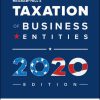Managerial Accounting Garrison 15th Edition Solutions Manual
$35.00 Original price was: $35.00.$26.50Current price is: $26.50.
Managerial Accounting Garrison 15th Edition Solutions Manual
This is completed downloadable of Managerial Accounting Garrison 15th Edition Solutions Manual

Product Details:
- ISBN-10 : 1259343634
- ISBN-13 : 978-1259343636
- Author: Garrison
As the long-time #1 best-seller Garrison has helped guide close to 3 million students through managerial accounting since it was first published. It identifies the three functions managers must perform within their organisations – plan operations control activities and make decisions – and explains what accounting information is necessary for these functions how to collect it and how to interpret it. Garrison’s Managerial Accounting is known for its relevance accuracy and clarity. It is also unique in that the authors write the most important supplements that accompany the book: solutions manual test bank instructor’s manual and study guide making them both of high quality and extremely consistent with the textbook.
Table of Content:
- Chapter 1 Managerial Accounting: An Overview
- What Is Managerial Accounting?
- Planning
- Controlling
- Decision Making
- Why Does Managerial Accounting Matter to Your Career?
- Business Majors
- Accounting Majors
- Professional Certification—A Smart Investment
- Managerial Accounting: Beyond the Numbers
- An Ethics Perspective
- Code of Conduct for Management Accountants
- A Strategic Management Perspective
- An Enterprise Risk Management Perspective
- A Corporate Social Responsibility Perspective
- A Process Management Perspective
- A Leadership Perspective
- Intrinsic Motivation
- Extrinsic Incentives
- Cognitive Bias
- Summary
- Glossary
- Questions
- Exercises
- Appendix 1A: Corporate Governance
- Glossary (Appendix 1A)
- Questions
- Chapter 2 Managerial Accounting and Cost Concepts
- Cost Classifications for Assigning Costs to Cost Objects
- Direct Cost
- Indirect Cost
- Cost Classifications for Manufacturing Companies
- Manufacturing Costs
- Direct Materials
- Direct Labor
- Manufacturing Overhead
- Nonmanufacturing Costs
- Cost Classifications for Preparing Financial Statements
- Product Costs
- Period Costs
- Prime Cost and Conversion Cost
- Cost Classifications for Predicting Cost Behavior
- Variable Cost
- Fixed Cost
- The Linearity Assumption and the Relevant Range
- Mixed Costs
- The Analysis of Mixed Costs
- Diagnosing Cost Behavior with a Scattergraph Plot
- The High-Low Method
- The Least-Squares Regression Method
- Traditional and Contribution Format Income Statements
- The Traditional Format Income Statement
- The Contribution Format Income Statement
- Cost Classifications for Decision Making
- Differential Cost and Revenue
- Opportunity Cost and Sunk Cost
- Summary
- Review Problem 1: Cost Terms
- Review Problem 2: High-Low Method
- Glossary
- Questions
- Applying Excel
- The Foundational 15
- Exercises
- Problems
- Cases
- Appendix 2A: Least-Squares Regression Computations
- Glossary (Appendix 2A)
- Exercises and Problems (Appendix 2A)
- Appendix 2B: Cost of Quality
- Summary (Appendix 2B)
- Glossary (Appendix 2B)
- Exercises and Problems (Appendix 2B)
- Chapter 3 Job-Order Costing
- Job-Order Costing—An Overview
- Job-Order Costing—An Example
- Measuring Direct Materials Cost
- Job Cost Sheet
- Measuring Direct Labor Cost
- Computing Predetermined Overhead Rates
- Applying Manufacturing Overhead
- Manufacturing Overhead—A Closer Look
- The Need for a Predetermined Rate
- Choice of an Allocation Base for Overhead Cost
- Computation of Unit Costs
- Job-Order Costing—The Flow of Costs
- The Purchase and Issue of Materials
- Issue of Direct and Indirect Materials
- Labor Cost
- Manufacturing Overhead Costs
- Applying Manufacturing Overhead
- The Concept of a Clearing Account
- Nonmanufacturing Costs
- Cost of Goods Manufactured
- Cost of Goods Sold
- Schedules of Cost of Goods Manufactured and Cost of Goods Sold
- Underapplied and Overapplied Overhead—A Closer Look
- Computing Underapplied and Overapplied Overhead
- Disposition of Underapplied or Overapplied Overhead Balances
- Closed Out to Cost of Goods Sold
- Allocated between Accounts
- Which Method Should Be Used for Disposing of Underapplied or Overapplied Overhead?
- A General Model of Product Cost Flows
- Multiple Predetermined Overhead Rates
- Job-Order Costing in Service Companies
- Summary
- Review Problem: Job-Order Costing
- Glossary
- Questions
- Applying Excel
- The Foundational 15
- Exercises
- Problems
- Cases
- Appendix 3A: Activity-Based Absorption Costing
- Glossary (Appendix 3A)
- Exercises and Problems (Appendix 3A)
- Appendix 3B: The Predetermined Overhead Rate and Capacity
- Exercises and Problems (Appendix 3B)
- Chapter 4 Process Costing
- Comparison of Job-Order and Process Costing
- Similarities between Job-Order and Process Costing
- Differences between Job-Order and Process Costing
- Cost Flows in Process Costing
- Processing Departments
- The Flow of Materials, Labor, and Overhead Costs
- Materials, Labor, and Overhead Cost Entries
- Materials Costs
- Labor Costs
- Overhead Costs
- Completing the Cost Flows
- Equivalent Units of Production
- Weighted-Average Method
- Compute and Apply Costs
- Cost per Equivalent Unit—Weighted-Average Method
- Applying Costs—Weighted-Average Method
- Cost Reconciliation Report
- Operation Costing
- Summary
- Review Problem: Process Cost Flows and Costing Units
- Glossary
- Questions
- Applying Excel
- The Foundational 15
- Exercises
- Problems
- Cases
- Appendix 4A: FIFO Method
- Exercises and Problems (Appendix 4A)
- Appendix 4B: Service Department Allocations
- Exercises and Problems (Appendix 4B)
- Chapter 5 Cost-Volume-Profit Relationships
- The Basics of Cost-Volume-Profit (CVP) Analysis
- Contribution Margin
- CVP Relationships in Equation Form
- CVP Relationships in Graphic Form
- Preparing the CVP Graph
- Contribution Margin Ratio (CM Ratio)
- Some Applications of CVP Concepts
- Change in Fixed Cost and Sales Volume
- Change in Variable Costs and Sales Volume
- Change in Fixed Cost, Selling Price, and Sales Volume
- Change in Variable Cost, Fixed Cost, and Sales Volume
- Change in Selling Price
- Break-Even and Target Profit Analysis
- Break-Even Analysis
- The Equation Method
- The Formula Method
- Break-Even in Dollar Sales
- Target Profit Analysis
- The Equation Method
- The Formula Method
- Target Profit Analysis in Terms of Dollar Sales
- The Margin of Safety
- CVP Considerations in Choosing a Cost Structure
- Cost Structure and Profit Stability
- Operating Leverage
- Structuring Sales Commissions
- Sales Mix
- The Definition of Sales Mix
- Sales Mix and Break-Even Analysis
- Summary
- Review Problem: CVP Relationships
- Glossary
- Questions
- Applying Excel
- The Foundational 15
- Exercises
- Problems
- Cases
- Chapter 6 Variable Costing and Segment Reporting: Tools for Management
- Overview of Variable and Absorption Costing
- Variable Costing
- Absorption Costing
- Selling and Administrative Expense
- Summary of Differences
- Variable and Absorption Costing—An Example
- Variable Costing Contribution Format Income Statement
- Absorption Costing Income Statement
- Reconciliation of Variable Costing with Absorption Costing Income
- Advantages of Variable Costing and the Contribution Approach
- Enabling CVP Analysis
- Explaining Changes in Net Operating Income
- Supporting Decision Making
- Segmented Income Statements and the Contribution Approach
- Traceable and Common Fixed Costs and the Segment Margin
- Identifying Traceable Fixed Costs
- Traceable Costs Can Become Common Costs
- Segmented Income Statements—An Example
- Levels of Segmented Income Statements
- Segmented Income Statements—Decision Making and Break-Even Analysis
- Decision Making
- Break-Even Analysis
- Segmented Income Statements—Common Mistakes
- Omission of Costs
- Inappropriate Methods for Assigning Traceable Costs among Segments
- Failure to Trace Costs Directly
- Inappropriate Allocation Base
- Arbitrarily Dividing Common Costs among Segments
- Income Statements—An External Reporting Perspective
- Companywide Income Statements
- Segmented Financial Information
- Summary
- Review Problem 1: Contrasting Variable and Absorption Costing
- Review Problem 2: Segmented Income Statements
- Glossary
- Questions
- Applying Excel
- The Foundational 15
- Exercises
- Problems
- Cases
- Appendix 6A: Super-Variable Costing
- Glossary (Appendix 6A)
- Exercises and Problems (Appendix 6A)
- Chapter 7 Activity-Based Costing: A Tool to Aid Decision Making
- Activity-Based Costing: An Overview
- Nonmanufacturing Costs and Activity-Based Costing
- Manufacturing Costs and Activity-Based Costing
- Cost Pools, Allocation Bases, and Activity-Based Costing
- Designing an Activity-Based Costing (ABC) System
- Steps for Implementing Activity-Based Costing
- Step 1: Define Activities, Activity Cost Pools, and Activity Measures
- The Mechanics of Activity-Based Costing
- Step 2: Assign Overhead Costs to Activity Cost Pools
- Step 3: Calculate Activity Rates
- Step 4: Assign Overhead Costs to Cost Objects
- Step 5: Prepare Management Reports
- Comparison of Traditional and ABC Product Costs
- Product Margins Computed Using the Traditional Cost System
- The Differences between ABC and Traditional Product Costs
- Targeting Process Improvements
- Activity-Based Costing and External Reports
- The Limitations of Activity-Based Costing
- Summary
- Review Problem: Activity-Based Costing
- Glossary
- Questions
- Applying Excel
- The Foundational 15
- Exercises
- Problems
- Appendix 7A: ABC Action Analysis
- Summary (Appendix 7A)
- Review Problem: Activity Analysis Report
- Glossary (Appendix 7A)
- Exercises and Problems (Appendix 7A)
- Chapter 8 Master Budgeting
- What Is a Budget
- Advantages of Budgeting
- Responsibility Accounting
- Choosing a Budget Period
- The Self-Imposed Budget
- Human Factors in Budgeting
- The Master Budget: An Overview
- Seeing the Big Picture
- Preparing the Master Budget
- The Beginning Balance Sheet
- The Budgeting Assumptions
- The Sales Budget
- The Production Budget
- Inventory Purchases—Merchandising Company
- The Direct Materials Budget
- The Direct Labor Budget
- The Manufacturing Overhead Budget
- The Ending Finished Goods Inventory Budget
- The Selling and Administrative Expense Budget
- The Cash Budget
- The Budgeted Income Statement
- The Budgeted Balance Sheet
- Summary
- Review Problem: Budget Schedules
- Glossary
- Questions
- Applying Excel
- The Foundational 15
- Exercises
- Problems
- Cases
- Chapter 9 Flexible Budgets and Performance Analysis
- The Variance Analysis Cycle
- Flexible Budgets
- Characteristics of a Flexible Budget
- Deficiencies of the Static Planning Budget
- How a Flexible Budget Works
- Flexible Budget Variances
- Activity Variances
- Revenue and Spending Variances
- A Performance Report Combining Activity and Revenue and Spending Variances
- Performance Reports in Nonprofit Organizations
- Performance Reports in Cost Centers
- Flexible Budgets with Multiple Cost Drivers
- Some Common Errors
- Summary
- Review Problem: Variance Analysis Using a Flexible Budget
- Glossary
- Questions
- Applying Excel
- The Foundational 15
- Exercises
- Problems
- Cases
- Chapter 10 Standard Costs and Variances
- Standard Costs—Setting the Stage
- Setting Direct Materials Standards
- Setting Direct Labor Standards
- Setting Variable Manufacturing Overhead Standards
- Using Standards in Flexible Budgets
- A General Model for Standard Cost Variance Analysis
- Using Standard Costs—Direct Materials Variances
- The Materials Price Variance
- The Materials Quantity Variance
- Using Standard Costs—Direct Labor Variances
- The Labor Rate Variance
- The Labor Efficiency Variance
- Using Standard Costs—Variable Manufacturing Overhead Variances
- The Variable Manufacturing Overhead Rate and Efficiency Variances
- An Important Subtlety in the Materials Variances
- Standard Costs—Managerial Implications
- Advantages of Standard Costs
- Potential Problems with Standard Costs
- Summary
- Review Problem: Standard Costs
- Glossary
- Questions
- Applying Excel
- The Foundational 15
- Exercises
- Problems
- Cases
- Appendix 10A: Predetermined Overhead Rates and Overhead Analysis in a Standard Costing System
- Glossary (Appendix 10A)
- Exercises and Problems (Appendix 10A)
- Appendix 10B: Journal Entries to Record Variances
- Exercises and Problems (Appendix 10B)
- Chapter 11 Performance Measurement in Decentralized Organizations
- Decentralization in Organizations
- Advantages and Disadvantages of Decentralization
- Responsibility Accounting
- Cost, Profit, and Investment Centers
- Cost Center
- Profit Center
- Investment Center
- Evaluating Investment Center Performance—Return on Investment
- The Return on Investment (ROI) Formula
- Net Operating Income and Operating Assets Defined
- Understanding ROI
- Criticisms of ROI
- Residual Income
- Motivation and Residual Income
- Divisional Comparison and Residual Income
- Operating Performance Measures
- Delivery Cycle Time
- Throughput (Manufacturing Cycle) Time
- Manufacturing Cycle Efficiency (MCE)
- Balanced Scorecard
- Common Characteristics of Balanced Scorecards
- A Company’s Strategy and the Balanced Scorecard
- Tying Compensation to the Balanced Scorecard
- Summary
- Review Problem: Return on Investment (ROI) and Residual Income
- Glossary
- Questions
- Applying Excel
- The Foundational 15
- Exercises
- Problems
- Cases
- Appendix 11A: Transfer Pricing
- Review Problem: Transfer Pricing
- Glossary (Appendix 11A)
- Exercises and Problems (Appendix 11A)
- Appendix 11B: Service Department Charges
- Glossary (Appendix 11B)
- Exercises and Problems (Appendix 11B)
- Chapter 12 Differential Analysis: The Key to Decision Making
- Cost Concepts for Decision Making
- Identifying Relevant Costs and Benefits
- Different Costs for Different Purposes
- An Example of Identifying Relevant Costs and Benefits
- Reconciling the Total and Differential Approaches
- Why Isolate Relevant Costs?
- Adding and Dropping Product Lines and Other Segments
- An Illustration of Cost Analysis
- A Comparative Format
- Beware of Allocated Fixed Costs
- The Make or Buy Decision
- Strategic Aspects of the Make or Buy Decision
- An Example of Make or Buy
- Opportunity Cost
- Special Orders
- Utilization of a Constrained Resource
- What Is a Constraint?
- Contribution Margin per Unit of the Constrained Resource
- Managing Constraints
- The Problem of Multiple Constraints
- Joint Product Costs and the Contribution Approach
- The Pitfalls of Allocation
- Sell or Process Further Decisions
- Activity-Based Costing and Relevant Costs
- Summary
- Review Problem: Relevant Costs
- Glossary
- Questions
- Applying Excel
- The Foundational 15
- Exercises
- Problems
- Cases
- Chapter 13 Capital Budgeting Decisions
- Capital Budgeting—An Overview
- Typical Capital Budgeting Decisions
- Cash Flows versus Net Operating Income
- Typical Cash Outflows
- Typical Cash Inflows
- The Time Value of Money
- The Payback Method
- Evaluation of the Payback Method
- An Extended Example of Payback
- Payback and Uneven Cash Flows
- The Net Present Value Method
- The Net Present Value Method Illustrated
- Recovery of the Original Investment
- An Extended Example of the Net Present Value Method
- The Internal Rate of Return Method
- The Internal Rate of Return Method Illustrated
- Comparison of the Net Present Value and Internal Rate of Return Methods
- Expanding the Net Present Value Method
- Least-Cost Decisions
- Uncertain Cash Flows
- An Example
- Preference Decisions—The Ranking of Investment Projects
- Internal Rate of Return Method
- Net Present Value Method
- The Simple Rate of Return Method
- Postaudit of Investment Projects
- Summary
- Review Problem: Comparison of Capital Budgeting Methods
- Glossary
- Questions
- Applying Excel
- The Foundational 15
- Exercises
- Problems
- Cases
- Appendix 13A: The Concept of Present Value
- Review Problem: Basic Present Value Computations
- Glossary (Appendix 13A)
- Exercises (Appendix 13A)
- Appendix 13B: Present Value Tables
- Appendix 13C: Income Taxes and the Net Present Value Method
- Summary (Appendix 13C)
- Exercises and Problems (Appendix 13C)
- Chapter 14 Statement of Cash Flows
- The Statement of Cash Flows: Key Concepts
- Organizing the Statement of Cash Flows
- Operating Activities: Direct or Indirect Method?
- The Indirect Method: A Three-Step Process
- Step 1
- Step 2
- Step 3
- Investing and Financing Activities: Gross Cash Flows
- Property, Plant, and Equipment
- Retained Earnings
- Summary of Key Concepts
- An Example of a Statement of Cash Flows
- Operating Activities
- Step 1
- Step 2
- Step 3
- Investing Activities
- Financing Activities
- Seeing the Big Picture
- Interpreting the Statement of Cash Flows
- Consider a Company’s Specific Circumstances
- Consider the Relationships among Numbers
- Free Cash Flow
- Earnings Quality
- Summary
- Review Problem
- Glossary
- Questions
- The Foundational 15
- Exercises
- Problems
- Appendix 14A: The Direct Method of Determining the Net Cash Provided by Operating Activities
- Exercises and Problems (Appendix 14A)
- Chapter 15 Financial Statement Analysis
- Limitations of Financial Statement Analysis
- Comparing Financial Data across Companies
- Looking beyond Ratios
- Statements in Comparative and Common-Size Form
- Dollar and Percentage Changes on Statements
- Common-Size Statements
- Ratio Analysis—Liquidity
- Working Capital
- Current Ratio
- Acid-Test (Quick) Ratio
- Ratio Analysis—Asset Management
- Accounts Receivable Turnover
- Inventory Turnover
- Operating Cycle
- Total Asset Turnover
- Ratio Analysis—Debt Management
- Times Interest Earned Ratio
- Debt-to-Equity Ratio
- Equity Multiplier
- Ratio Analysis—Profitability
- Gross Margin Percentage
- Net Profit Margin Percentage
- Return on Total Assets
- Return on Equity
- Ratio Analysis—Market Performance
- Earnings per Share
- Price-Earnings Ratio
- Dividend Payout and Yield Ratios
- The Dividend Payout Ratio
- The Dividend Yield Ratio
- Book Value per Share
- Summary of Ratios and Sources of Comparative Ratio Data
- Summary
- Review Problem: Selected Ratios and Financial Leverage
- Glossary
- Questions
- The Foundational 15
- Exercises
- Problems
- Appendix A: Pricing Products and Services
- Introduction
- The Economists’ Approach to Pricing
- Elasticity of Demand
- The Profit-Maximizing Price
- The Absorption Costing Approach to Cost-Plus Pricing
- Setting a Target Selling Price Using the Absorption Costing Approach
- Determining the Markup Percentage
- Problems with the Absorption Costing Approach
- Target Costing
- Reasons for Using Target Costing
- An Example of Target Costing
- Summary
- Glossary
- Questions
- Exercises
- Problems
- Appendix B: Profitability Analysis
- Introduction
- Absolute Profitability
- Relative Profitability
- Volume Trade-Off Decisions
- Managerial Implications
- Summary
- Glossary
- Questions
- Exercises
- Problems
- Cases
- Credits
- Index
People Also Search:
managerial accounting garrison
managerial accounting garrison 15th edition
managerial accounting garrison 15th edition download scribd
managerial accounting garrison 15th edition solution manual download pdf
You may also like…
Solution Manual
Managerial Accounting 16th Edition Garrison Solutions Manual
Solution Manual
Solutions manual for Managerial Accounting (13th Edition) Ray Garrison, Eric Noreen, Peter Brewer
Solution Manual
Solution Manual for Managerial Accounting, 17th Edition, Ray Garrison, Eric Noreen Peter Brewer












